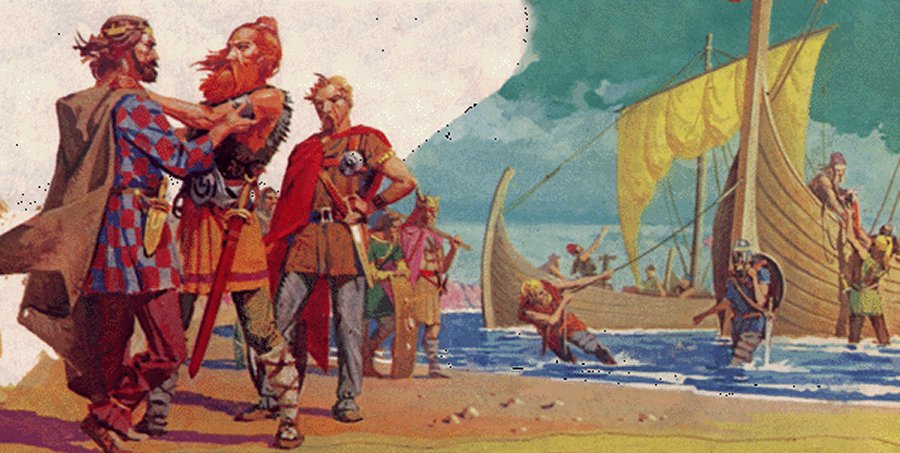MessageToEagle.com – According to very ancient poems, Odin’s sons, Weldegg, Beldegg, Sigi, Skiold, Sæming, and Yngvi, became kings of East Saxony, West Saxony, Franconia, Denmark, Norway, and Sweden. They are distant ancestors of the two legendary Saxons brothers, Hengist and Horsa, leaders of the first Anglo-Saxon settlers in Britain.
But the questions are: Who were the legendary warrior brothers Hengest and Horsa? Did they really exist?
For ages after the arrival of the Saxons under the warlords Hengist and Horsa in 449 AD, the whole western coast of Britain was possessed by the aboriginal inhabitants, engaged in continuous battles with the invaders.
Archaeological evidence has revealed traces of Germanic settlers in Canterbury in the late 300s; however, the main settlement probably took place in the 450s, under the leadership of the two warlord brothers Hengest and Horsa.
Some historians have suggested that they are only mythical founding figures; divine twins like Romulus and Remus, rather than real people.
Hengest (also spelled Hengist) and Horsa are said to have been Jutes and sons of Wihtgils, a semi-legendary Jutish chieftain, according to the Anglo-Saxon Chronicle, one of the few literary sources for England’s history during the time period following the Roman presence and preceding the Norman invasion.
See also:
Legendary Beowulf: Strong And Courageous Prince Of Geats Fighting Grendel And Dragon Monsters
Legendary Bladud: The Flying King And Historical Founder Of Bath, England
Brutus Of Troy: First King Of Britain Or Just A Myth?
Fascinating Myths And Legends From Across The World
According to the English historian and theologian Bede, the two brothers were Jutes, who are generally assumed to have come from Jutland in Denmark.
Hengest and Horsa arrived in or shortly after 449, with three shiploads of ‘Angles or Saxons’ at the invitation of Vortigern, king of the Britons (who flourished 425–450). They came his allies, to help him against the Picts, attacking from North between 446 and 454 AD.
As Vortigern’s allies, they help him against the Picts, attacking from North between 446 and 454 AD. It is not specified, however, where, in Britain, this Vortigern had his seat? Was it located in the northwest closer to the Picts region, or in the south?
The Chronicle also says that Hengest and Horsa fought against Katigern, second son of Vortigern, near Epiford and Horsa was killed at Aegelsthrep (possibly Aylesford, Kent) in 455.
The Venerable Bede mentions a monument to him located in east Kent; Horstead, near Aylesford, may be named for him; the Chronicle says that Hengist began to reign in 455 and that he fought against the Britons; it implies that Hengist died in 488.
It has been suggested that one of the brothers, Hengist, may perhaps be identified with Beowulf or as mentioned earlier, Hengest and Horsa may be only fictional figures in one, interconnected saga.
Copyright © MessageToEagle.com All rights reserved. This material may not be published, broadcast, rewritten or redistributed in whole or part without the express written permission of MessageToEagle.com
Expand for referencesReferences:
B. Yorke, Kings and Kingdoms of Early Anglo-Saxon England








